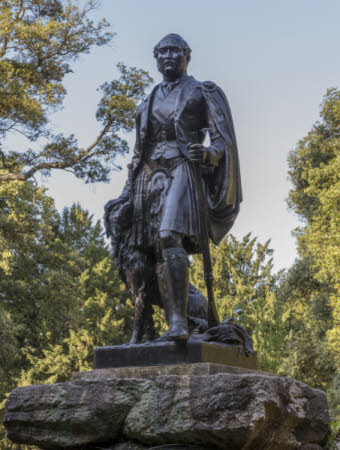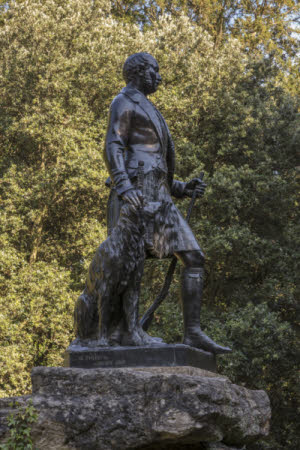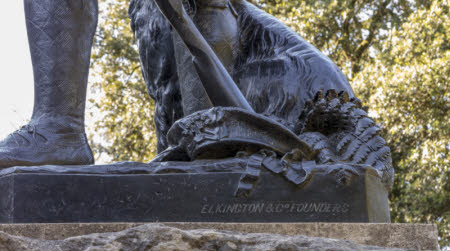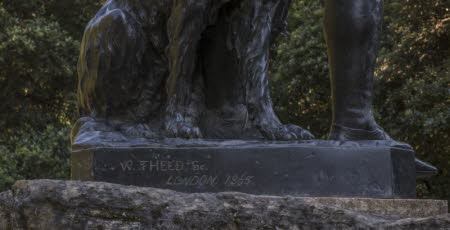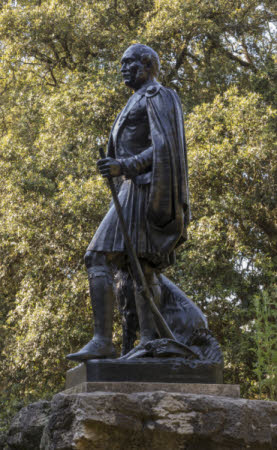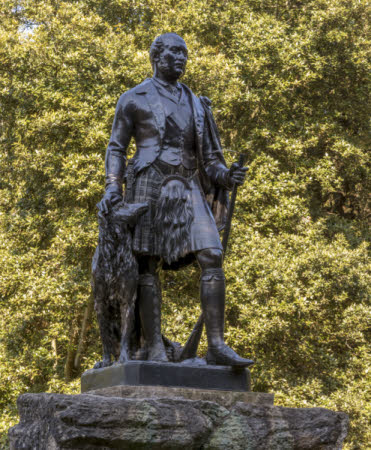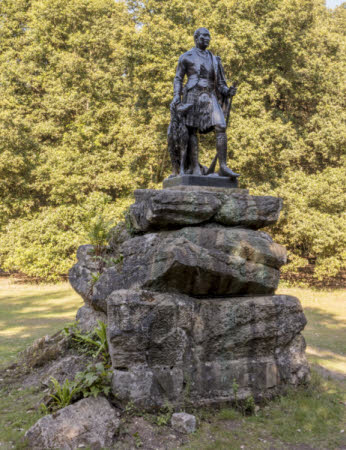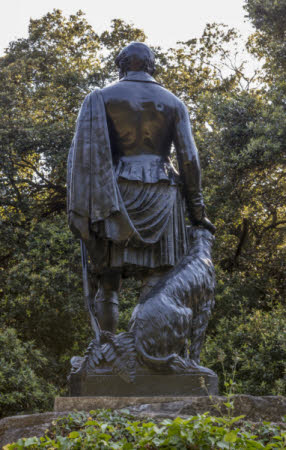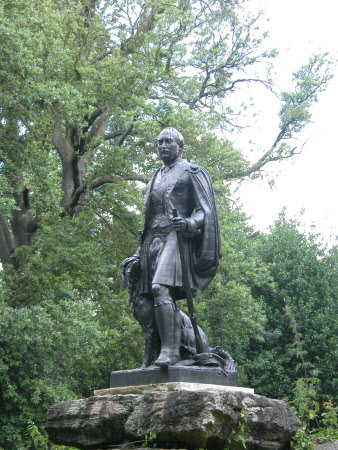Prince Albert, Prince Consort (1819-1861)
William Theed the younger (Trentham 1804 – Kensington 1891)
Category
Art / Sculpture
Date
1865
Materials
Bronze, copper alloy.
Order this imageCollection
Cliveden Estate, Buckinghamshire
NT 766002
Caption
This statue was presented by Queen Victoria to the Duchess of Sutherland in memory of Prince Albert and in fond remembrance of the Royal couple‘s frequent visits to Cliveden in the 1850s. Set in the Ilex Grove, it would seem very likely that this site was specifically chosen by the Duchess of Sutherland. The Morning Post of 15 July 1875 describes a garden party hosted by the Marchioness of Westminster and the statue is mentioned: ‘By the good taste of the Duchess of Sutherland the statue is placed on a rough formation of Portland stone, its rustic base harmonising admirably with the surrounding foliage’.
Summary
Bronze sculpture, Prince Albert, Prince Consort (1819-1861) by William Theed the younger (Trentham 1804 – Kensington 1891). Life size - square base. In Scottish costume, a long-haired setter sitting on his right. He stands with left leg forward, his right hand on the dog, his left holding the barrel of the rifle which stands on the ground. After a marble at Balmoral (1863), given by Queen Victoria to her Mistress of the Robes, the Duchess of Sutherland (both of them were widowed in 1861). The figure is exceptionally finely modeled, especially in the coat of the setter and the hatching of the stock of the Prince's shotgun. There are four unsigned drawings in the Cliveden Album for the placing of the statue in a niche on the east face of the clock-tower, but since another bronze replica set up at Balmoral in 1867 stands on an identical rocky cairn it seems likely that this was the original treatment.
Provenance
After a life-sized marble at Balmoral (1863), Queen Victoria ordered a bronze over life sized version for the grounds at Balmoral, and in 1865 gifted this similar sized version to her Mistress of the Robes and confidant, Harriet, Duchess of Sutherland (both of them were widowed in 1861). After the Duchess of Sutherland's death, the statue passed with the house to the 1st Duke of Westminster and then on to William Waldorf Astor, 1st Viscount Astor, it was presented to the National Trust, with the house and grounds, by Waldorf, 2nd Viscount Astor (1879-1952) in 1942.
Marks and inscriptions
Elevation of plinth on proper left : ELIKINGTON & Co FOUNDERS Elevation of plinth on proper right: W. THEED. Sc. LONDON. 1865.
Makers and roles
William Theed the younger (Trentham 1804 – Kensington 1891), sculptor Elkington and Co Ltd, founder
